
|
Best viewed with Netscape Download Caligula Font to view this page as intended |
 |
 |
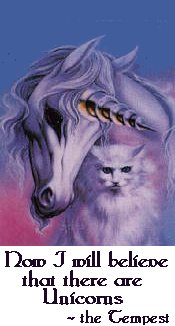 |
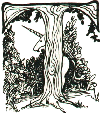 he Unicorn was a stranger to humanity.
They were elusive spirits that dwelled apart from mortals, preferring
places where magick could still be found. They were more spoken of
than seen. A thousand tales arose about their fleetness and nobility,
about their horn's power of detecting poison or purifying water,
about the beasts ability to escape capture or death except in the
presence of a maiden. Unicorns were protectors of animals around it,
cleansing the lakes and rivers with it's horn.
he Unicorn was a stranger to humanity.
They were elusive spirits that dwelled apart from mortals, preferring
places where magick could still be found. They were more spoken of
than seen. A thousand tales arose about their fleetness and nobility,
about their horn's power of detecting poison or purifying water,
about the beasts ability to escape capture or death except in the
presence of a maiden. Unicorns were protectors of animals around it,
cleansing the lakes and rivers with it's horn.Many scholars searched among classified texts for reference to the Unicorn. The first unicorn seen in Europe, was described in Julius Ceasar's account of his campaigns among the Celts. He had heard tales that the creature inhabited the Hercynian Forest (near the Rhine), a deep stretch of woods perfect for the shy unicorn. Ceasar reported a sighting of one, "shaped like a stag, from the middle of whose forhead, between the ears, stands forth a single horn, taller and straighter than the horns we know." That was all he recorded. For more than sightings it was necessary to go farther back in time and farther eastward to the continent of Asia, which had given birth to the unicorn or at least it's ancestors. A Greek named Ctesias of Cridus, serving as physician to Persian Kings around the end of the fifth century BC, heard of many curiosities in the courts of these monarchs and took care to report them. "There are in India, certain wild asses that are large as horses and even larger. Their bodies are white, their heads are dark red, and their eyes dark blue. They have a horn in the middle of their forehead that is about eighteen inches in height. The base of this horn is pure white. The upper part is sharp and of a vivid crimsom, and the middle portion is black. Those who drank from these horns made into vessels, never fall subject to sickness and are immune to poisons either before or after swallowing liquids from these beakers" Ctesias never saw one of the creatures himself. He simply repeated tales of travelers to Tibet and the Himalayas. He may have heard the garbled stories of the Unicorn known as K'i-lin, k'i was the male, lin the female, of China which was revered above all other creatures and concidered king of the beasts that lived on land. The Chinese unicorn appeared out of nowhere, trodded the halls of the Emporer and then vanished. Another garbled tale was that of the Karg or Karkadann of Persia and India. It too could be tamed only in the presence of a maiden and knife handles made with it's horn exuded a kind sweat in the presence of poison. Deep in the forests of France, hunters found a unicorn in a flowering grove. They prodded it from it's lair with spears to have the pleasure of chasing it. In the end they slew it to gain the treasure of it's horn. A Bulgarian tale tells of a maiden leading a Unicorn to wells to cleanse them and how the villagers attacked and killed it, taking the horn for themselves little caring that their deed removed magic from the world. Unicorns seemed to vanish after these incidents, fleeing to their own world, where men could not find them. The unicorn is the symbol of purity, beauty and innocence.
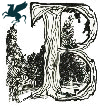 efore
true magick left the world, the people of Greece would see a white
reflection skim over the waters of the Gulf of Corinth. The fishermen
knew what it was-Pegasus-the winged horse of the heavens at play in his
cloud meadow. He was the master of the air soaring higher than mortal
man could see. Mount Helicon, rising on the northern shore of the Gulf
of Corinth was his home. The Greek people honored him. efore
true magick left the world, the people of Greece would see a white
reflection skim over the waters of the Gulf of Corinth. The fishermen
knew what it was-Pegasus-the winged horse of the heavens at play in his
cloud meadow. He was the master of the air soaring higher than mortal
man could see. Mount Helicon, rising on the northern shore of the Gulf
of Corinth was his home. The Greek people honored him.Pegasus was a beast of the gods and was god-like in his power. He was born of the blood of Medusa as she was beheaded by the hero Perseus. Another Greek hero, Bellerophon, was able to capture Pegasus and ride him. Bellerophon defeated the Chimera mounted on the back of Pegasus. However, when Bellerophon tried to ride Pegasus into the heavens, he was attacked by a messenger from Zeus, fell from Pegasus, and was killed. Pegasus traveled on to the heavens alone where he became a constellation, and a servant of Zeus. It is said that a kick from his hoof created the fountain of poetic inspiration. The people of Corinth imprinted the image of Pegasus on their coins in honor of him. In modern times, Pegasus is seen as the symbol for the immortality of the soul, and as the carrier and protector that guards the spirit in its journeys into the astral plane. Pegasus is the power of the creative spirit in all of us. He is the symbol of the Muses, of inspiration, and of the beauty we bring to our life and the lives of others.
 n the
world of fantastic animals, the dragon is unique. No other creature has
appeared in such a rich variety of forms. It's as if there was a whole
family of different dragon species that really existed, before they
mysteriously became extinct. Scholars wrote of dragons as scientific fact,
their anatomy, and natural history being recorded in detail. n the
world of fantastic animals, the dragon is unique. No other creature has
appeared in such a rich variety of forms. It's as if there was a whole
family of different dragon species that really existed, before they
mysteriously became extinct. Scholars wrote of dragons as scientific fact,
their anatomy, and natural history being recorded in detail.The accounts of dragons reveal a bewildering range of sizes and forms. Most dragons seem to have been about twenty feet long, but a few, were said to have reached lengths of 210 feet. Some had legs, others had wings, and many had both or neither. There were dragons with many heads, as many as 100. Their blood was thought to be poison, but it-along with other parts of their anatomies-was used in medical cures and magickal potions. Their foul breath was legendary, reeking of fire and brimstone, some scorching with fire others breathed widespread disease. All dragons were linked with elemental and chaotic powers. They were rulers of wind, fire and water. They possessed an ancient intelligence-an innate magick-born of primal powers from which they sprang. Slaying of the creatures of chaos made possible the establishment of order and of growing powers of humankind. The beginning of the end of the mighty race of dragons. But the fate of the dragon lay not in the the emergent role of the dragonslayer-a developement that may have quickened the end but was hardly its cause. Rather, the end was brought about by the dragons own diminishment-the long, slow slide that reduced the dragons, by stages, from a creature filling the void and towering above creation to a beast that could be bested by man armed with nothing more than bravery, daring and a strong weapon. The dragon symbolizes strength,power and endurance.
|
The Lindworm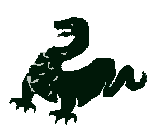 Falling between the birdlike wyvern and the snakelike guivre, the lindworm had a serpentine body with one pair of legs. It was flightless. The Italian traveler Marco Polo reported seeing some lindworms while crossing the steppes of Central Asia. |
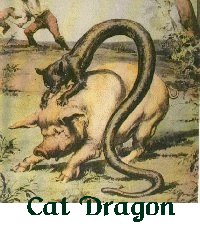 |
| ||
|
|
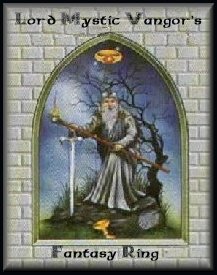 Graphic Created by Cinnamon This Mystic Lord Vangor Fantasy Ring site is owned by Cinnamon Click Mystic Lord Vangor's Fantasy Ring to join Prev Next Random List Sites |
  |
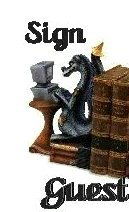  |
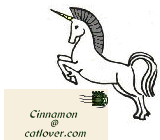 |
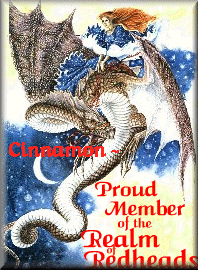 |
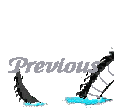 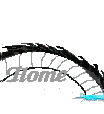 
|
|